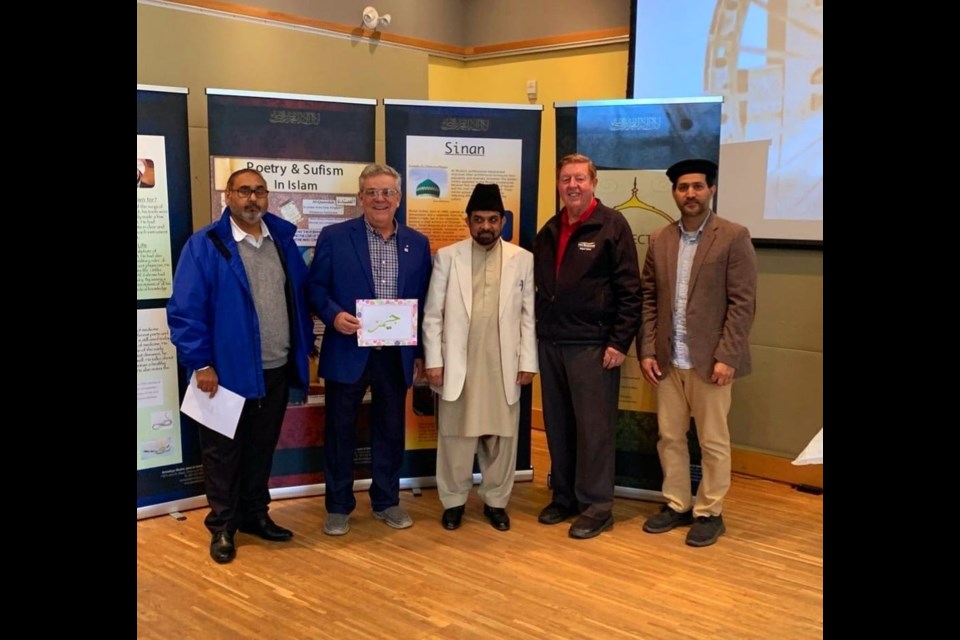It may have been a rainy day outside, but that didn't stop dozens of community members from attending the Islamic Heritage Month event at the Bradford Library on Wednesday afternoon.
The Ahmadiyya Muslim Women's Association hosted the event in the Zima room which was filled with displays and literature for residents to learn more about the Islam religion, its history, art, and culture.
Displays showcased a plethora of Islamic inventions, artifacts, holy scriptures, and artists and their contributions to society.
The Muslim world has been a centre for learning, preserving Greek knowledge, and expanding sciences.
Some examples of their contributions include the proven theory that planets revolve around the sun.
Six hundred years before Copernicus and Galileo suggested that the planets orbited the sun, a view challenged by their contemporaries, Al-Biruni not only proposed that the earth revolves around the sun, but that the earth spins on its axis – to scientific acclaim.
In the math field, the word 'algebra' comes from the Persian mathematician Muhammad ibn Musa al-Kwarizmi who wrote the textbook on Al-jabr – Algebra to modern math students – in 820 AD.
There were also many female scholars who made significant contributions to the academic world.
Fatima Al-Fihri was not only a woman and a scholar but the founder of the world’s first (and still active) university in Fes, Morocco, in 859 AD.
Mariam Astrulabi was a female Muslim scientist who is known for developing astrolabes, which are the equivalent of a modern-day compass.
"They used to use it for navigation purposes and also to tell the time for the prayers," association member Sadaaf Shah told BradfordToday.
Following the Quran, prayers are conducted five times per day and each time the astrolabe would be used to find the direction of prayer toward Mecca, Islam's holiest city.
Nowadays Muslims use a compass to find the direction of the Kaba in Mecca.
Before prayers, it is incumbent to wash by performing ablution. Cleanliness is part and parcel of the Islamic faith.
Caligraphy is a part of Islamic culture, using it not only for communication but art.
"In Islam, we don't draw portraits or people's pictures, because God has made it and it's perfect, and we will never be able to emulate that," said Shah. "We avoid drawing pictures but we do verses of the Quran, this is art."
The library event featured many pieces of calligraphy art, and even a table for residents to try themselves.
At another table, residents were also able to have henna drawn on their hands. Henna is part of the Muslim culture and has historically been used as a way to keep cool in the heat. It is also used in many celebrations including weddings.
Guests were also welcome to enjoy light refreshments and snacks, including a creamy pink tea.
The motto of the Islam community is “love for all, hatred for none,” which followers of the religion try to embody in their everyday lives.
"It is important to eradicate the misconceptions about Islam and tear away from Islamophobia," said the group's press secretary Sairah Chaudary. "Through education, we can bring our students and communities to see the true Islam, and the positive growth Canadian Muslims have made in our society."
The group hosted the event in an effort to promote diversity, social equity and inclusivity. Some Bradford schools have set up dedicated Islamic Heritage displays in their hallways, which the group was pleased to see.
Many members of the community took time to stop at the drop-in event, including BWG mayor-elect James Leduc and deputy mayor-elect Raj Sandhu, as well as New Tecumseth mayor Rick Milne and Shannon Lowe of South Simcoe Police.
